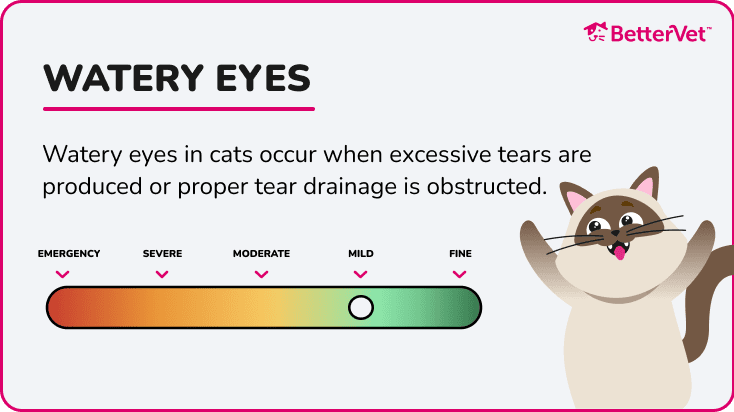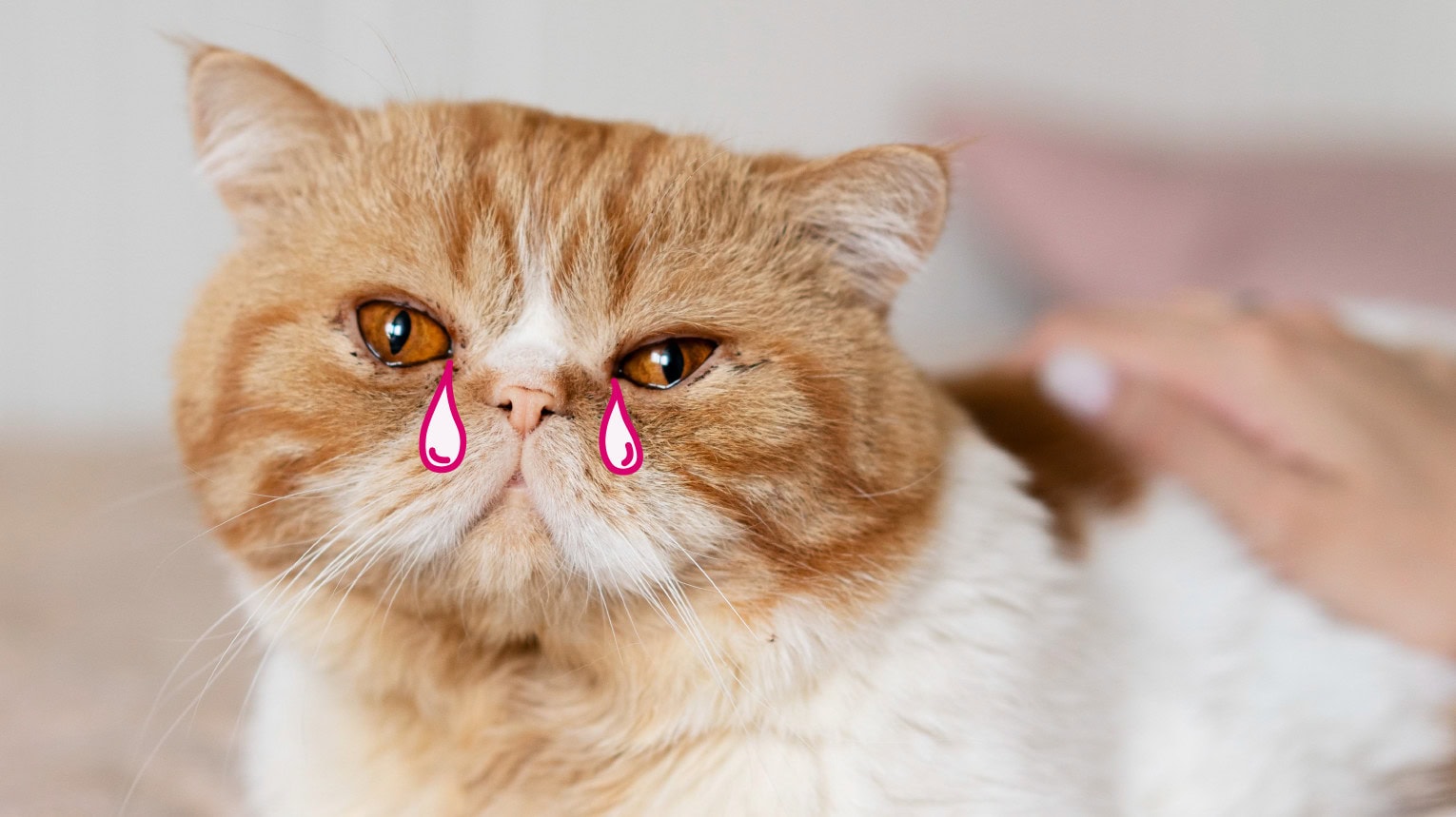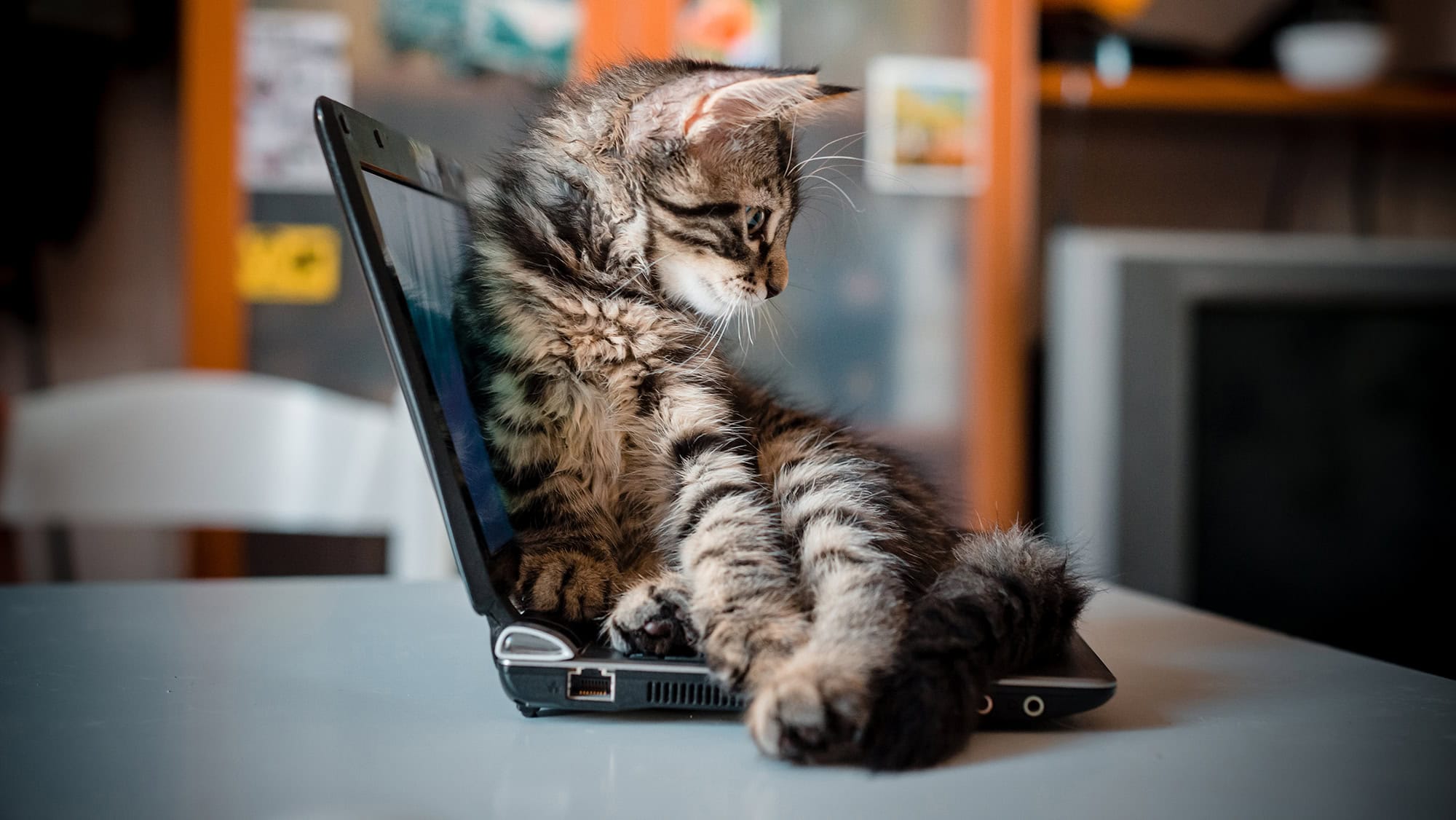Summary: Consult a vet if your cat has persistent eye issues like watering, discharge, or pawing, as these symptoms can signal allergies, infections, corneal problems, or foreign objects. A vet can diagnose the cause and provide treatment, including medication, surgery, or object removal.
Watery eyes, also known as epiphora, in cats, can result from a variety of factors. Identifying the cause is essential for determining the right treatment.
Drawing on my experience in veterinary care, I’ll help you understand some of the common reasons behind watery eyes in cats, teary-eyed cats, and cat eye discharge.
We’ll also discuss signs that your cat’s eye problems warrant a visit to the veterinarian and potential treatment options.

What are Watery Eyes in Cats?
Watery eyes in cats, medically termed epiphora, occur when excessive tears are produced or proper tear drainage is obstructed. This can lead to a wet appearance around the eyes, discharge, and discomfort for your feline friend.
Causes of Watery Eyes in Cats
Refer to the list below of some of the most common causes of your cat’s watery eyes.
Allergies
Similar to humans, our feline companions also develop allergies to pollen, dust mites, mold, and other environmental irritants. This triggers inflammation and increased tear production, causing watery eyes in cats.
Uveitis
Inflammation of the uvea can trigger secondary tearing of the eyes.
Corneal problems
Scratches, ulcers, or other abnormalities of the cornea (the clear surface of the eye) can irritate the eye and cause excessive tearing.
Conjunctivitis
Inflammation and swelling of the conjunctiva, the thin membrane lining the eyelids, can be caused by allergies, infections, or irritants, leading to watery eyes, redness, and squinting.
Infections
Bacterial, viral, or fungal infections of the eye or upper respiratory tract can lead to inflammation and watery discharge. Examples include herpesvirus or calicivirus infections.
Eye ulcers
Corneal ulcers from trauma, foreign objects, and infections can be painful and contribute to tearing.
Eyelid tumors
Eyelid tumors can rub on the cornea, causing irritation and tearing. Some can block the tear ducts, leading to excessive tearing.
Squamous cell carcinoma (SCC) is extremely rare but the most commonly seen eye-associated tumor in cats, with white cats being the most commonly affected group.
Eyelash issues
Distichiasis, the irregular growth of eyelashes rubbing on the cornea, and entropion, the turning inward of the eyelashes rubbing on the cornea, cause irritation and tearing.
Glaucoma
This serious condition increases pressure within the eye, which can damage the optic nerve and lead to watery eyes, pain,and vision loss.
Trauma
Trauma to any structures of the eye, such as scratches and facial bone fractures can lead to inflammation and tearing. Trauma or fractures of the facial bones around the eye can create inflammation within the eye or alter the normal drainage of the eyes.
Foreign Objects
Tiny specks of dust, plant material, or hair lodged in the eye can irritate and cause excessive tearing.
Blocked Tear Ducts
A blockage in the tear ducts, which drain tears away from the eye, can cause them to overflow and create watery eyes. This can be congenital (present at birth) or caused by inflammation or infections.
When to Seek Veterinary Care
Early veterinary intervention is crucial for diagnosing the underlying cause of watery eyes and preventing complications.
Schedule a sick pet visit if your cat experiences:
-
Any signs of pain or discomfort
-
Persistent watery eyes for more than 24 hours
-
Redness in the eye lasting longer than 24 hours
-
Difficulty opening or keeping the eye open
-
Sneezing or nasal discharge
-
Discharge from the eyes (clear, yellow, or green)
-
Squinting or pawing at the eye
-
Difficulty seeing or visual impairment
-
Any indication of trauma to the eye
Diagnosing Watery Eyes in Cats
Veterinarians use various tools and tests to pinpoint the cause of your cat’s watery eyes, including:
-
Physical Examination: A thorough eye exam with an ophthalmoscope helps assess eye structures.
-
Diagnostic Tests: Allergy testing, tear production tests, tonometry (to measure eye pressure), and advanced imaging (X-rays, MRI, CT scans) can be used depending on the suspected cause.
-
Eye Stain Test: This evaluates for trauma or conditions affecting the cornea.
-
Schirmer Tear Test: Measures tear production, helping to assess the eye’s moisture levels.
-
Laboratory Analysis: Culturing eye discharge helps identify the type of bacterial infection present.
-
Cytology: Examining cells around the eye can reveal inflammatory cells or specific infectious agents.
Treatment Options for Watery Eyes
Treatment for watery eyes in cats depends on the underlying cause:
-
Removal of any foreign body causing irritation is often the first step. For many conditions, using an e-collar or cone is necessary because cats tend to rub or scratch at their irritated eyes, which can worsen the condition and delay healing.
-
Medications are commonly prescribed based on the specific issue. Antihistamines can manage allergies, while topical antibiotics treat bacterial infections. Pain relief is provided for conditions causing discomfort, and anti-inflammatories address inflammation.
-
Surgery may sometimes be required for complicated corneal injuries or to correct abnormal eyelashes.
Home Remedies for Cat Eye Watering
How long your cat’s eyes take to recover will depend on the cause. However, there are some things you can do at home to support their healing:
-
Gentle cleaning with a warm, wet cloth
-
Place a cone on your cat to prevent rubbing or scratching at their eyes
-
Schedule follow-up visits with a veterinarian to monitor healing
Conclusion
Watery eyes in cats can be caused by various factors, from allergies to blocked tear ducts. Working with a veterinarian can determine the underlying cause and the best treatment.
If your cat has one or both eyes watering, it is best to contact your veterinarian right away to treat the condition and prevent it from worsening. Schedule a home pet sick visit today with BetterVet.
Frequently Asked Questions
Should I be worried if my cat’s eye is watering?
Some conditions that lead to watering of the eye may not be severe, such as allergies, while others, such as a corneal ulcer, need attention immediately. It is always best to consult with a veterinarian.
Why is water coming out of my cat’s eyes?
Several conditions, from allergies and infections to structural diseases, can contribute to watery eyes in cats.
How can I treat my cat’s watery eyes at home?
It is best to seek consultation from a veterinarian if your cat’s eyes are watering to ensure they are receiving the best care and monitoring.
Will cat conjunctivitis go away by itself?
Some mild causes of conjunctivitis may be self-limiting or go away on their own, while others may require the intervention of a trained professional.
Why is my cat only watering in one eye?
Some conditions, like a blocked tear duct or an abnormal eyelash, can contribute to only one eye watering. Your veterinarian can help determine what the underlying cause may be.
Source:
-
Sandhas, E., Merle, R., & Eule, J. C. (2017). Consider the eye in preventive healthcare – ocular findings, intraocular pressure and Schirmer tear test in ageing cats. Journal of Feline Medicine and Surgery. https://doi.org/10.1177/1098612X17742528





